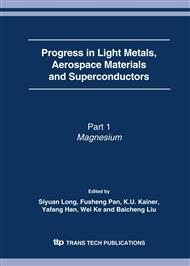p.707
p.713
p.719
p.723
p.729
p.735
p.741
p.745
p.749
Rheological Behavior and Thermo-Mechanical Coupling Analysis of Aluminum Continuous Roll Casting Process
Abstract:
According to the characteristics of transient solidification and continuous rheology in roll casting process, and by modifying clamp system and loading way of molten metal, physical simulation of continuous roll casting process was realized in conjunction with Gleeble-1500 thermal-mechanical simulation testing machine in the present study. And relative rheologica1 constitutive models fitting the process were set up. A method to conduct multi-nonlinear thermo-mechanical coupling analysis suitable for aluminum strip roll casting process was explored by the secondary development of ANSYS finite element analysis software. The variation rules of temperature and deformation field were obtained. It has been found that the simulating models are compared with experimental results.
Info:
Periodical:
Pages:
729-734
Citation:
Online since:
May 2007
Authors:
Price:
Сopyright:
© 2007 Trans Tech Publications Ltd. All Rights Reserved
Share:
Citation:


